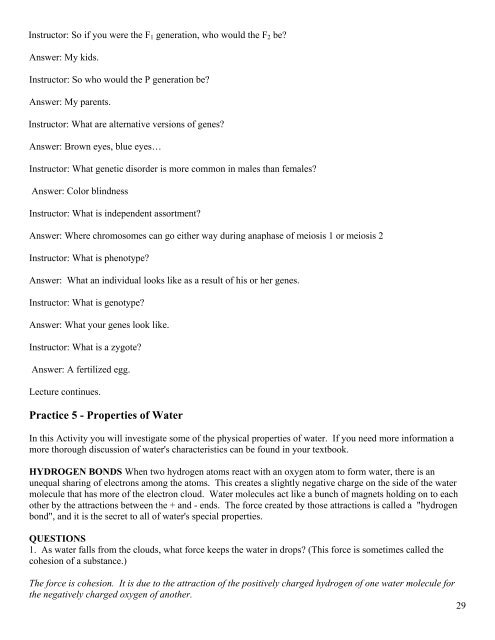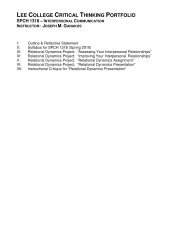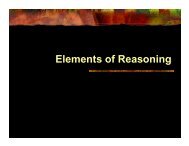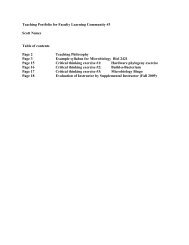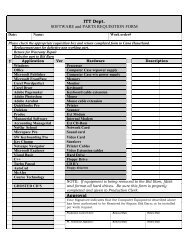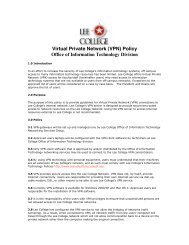Judy Lehmberg (FLC I) - Lee College
Judy Lehmberg (FLC I) - Lee College
Judy Lehmberg (FLC I) - Lee College
Create successful ePaper yourself
Turn your PDF publications into a flip-book with our unique Google optimized e-Paper software.
Instructor: So if you were the F 1 generation, who would the F 2 be?<br />
Answer: My kids.<br />
Instructor: So who would the P generation be?<br />
Answer: My parents.<br />
Instructor: What are alternative versions of genes?<br />
Answer: Brown eyes, blue eyes…<br />
Instructor: What genetic disorder is more common in males than females?<br />
Answer: Color blindness<br />
Instructor: What is independent assortment?<br />
Answer: Where chromosomes can go either way during anaphase of meiosis 1 or meiosis 2<br />
Instructor: What is phenotype?<br />
Answer: What an individual looks like as a result of his or her genes.<br />
Instructor: What is genotype?<br />
Answer: What your genes look like.<br />
Instructor: What is a zygote?<br />
Answer: A fertilized egg.<br />
Lecture continues.<br />
Practice 5 - Properties of Water<br />
In this Activity you will investigate some of the physical properties of water. If you need more information a<br />
more thorough discussion of water's characteristics can be found in your textbook.<br />
HYDROGEN BONDS When two hydrogen atoms react with an oxygen atom to form water, there is an<br />
unequal sharing of electrons among the atoms. This creates a slightly negative charge on the side of the water<br />
molecule that has more of the electron cloud. Water molecules act like a bunch of magnets holding on to each<br />
other by the attractions between the + and - ends. The force created by those attractions is called a "hydrogen<br />
bond", and it is the secret to all of water's special properties.<br />
QUESTIONS<br />
1. As water falls from the clouds, what force keeps the water in drops? (This force is sometimes called the<br />
cohesion of a substance.)<br />
The force is cohesion. It is due to the attraction of the positively charged hydrogen of one water molecule for<br />
the negatively charged oxygen of another.<br />
29


